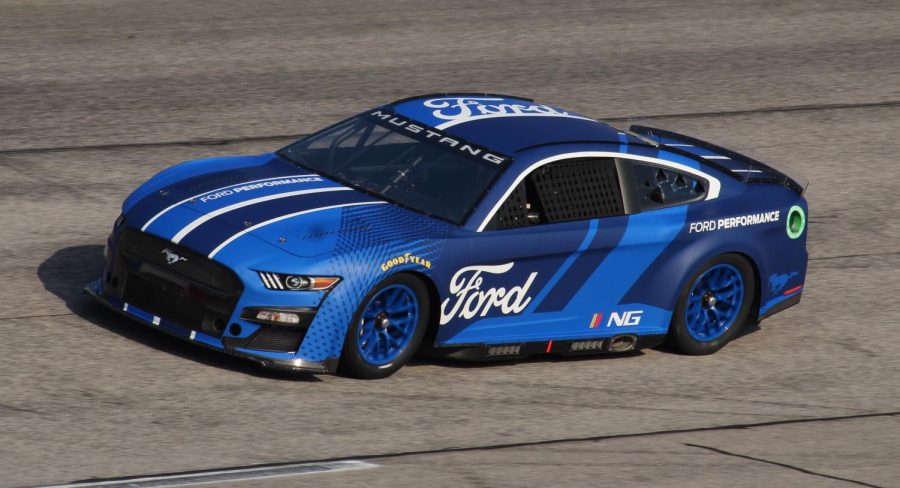‘Next Gen’ racecar debut gambles NASCAR’s future
February 18, 2022
NASCAR’s decreasing viewership and awful public perception will take a backseat this year as the ‘Next Gen’ race car finally makes its debut at Daytona 500 on Feb. 20. NASCAR aims to come back with strong competition with ‘Next Gen’ after a delayed year due to the pandemic.
The ‘Next Gen’ is a massive technological leap for a series known for preserving archaic technology.
A new sequential transmission and independent rear suspension will make the race cars seem more like touring cars, a big difference from the synchronized spectacle of a NASCAR Cup Series pit stop.
The spec chassis and composite bodies of the ‘Next Gen” are striking, and allow the Chevrolet Camaro ZL1, Ford Mustang and Toyota TRD Camry to resemble their street counterparts comparably.
The composite body is already used in the lower series. Multiple panels are bolted together to form a race car, compared to previous generations when teams had body fabricators to build their cars.
Developed in 2019, the ‘Next Gen’ replaces the previous model, Gen 6. This ambitious new design attempts to lower costs, promote close racing, increase competition and ultimately attract outside investors in an attempt to save the sport.
It is working to an extent.
Justin Marks, former professional race car driver and co-owner of Trackhouse Racing Team , told The New York Times that he estimates the ‘Next Gen’ car should lower ownership costs by 25% to 40%. He is adamant, after purchasing Chip Ganassi Racing’s NASCAR operations in 2021, on expanding Trackhouse to a two-car operation after retaining Ganassi driver Ross Chastain.
His former teammate, 2004 NASCAR Winston Cup Series winner Kurt Busch, joined 23XI Racing in August 2021. The team, co-owned by Naismith Memorial Basketball Hall of Famer, Michael Jordan and Cup Series driver Denny Hamlin, is also expanding to a two-car operation with the introduction of the new car.
This year, other notable entries include NASCAR Camping World Truck Series Team Petty GMS Motorsports, which is also expanding to NASCAR’s premier series.
NASCAR Xfinity Series team, Kaulig Racing, with Justin Haley in No. 31, and Daniel Hemric, Noah Gragson and A.J. Allmendinger in No.16, will also be expanding to two full time cars after purchasing a majority share of Richard Petty Motorsports with Cup Veteran, Ty, Dillion.
2012 NASCAR Sprint Cup Series champion Brad Keselowski drove the No. 6 as part-owner of Roush Fenway Keselowski Racing (RFK Racing) after racing 11 seasons for Team Penske.
For years, Cup Series competition saw increasing costs as teams recruited engineers, amassed chassis and developed their parts to win.
Now, teams are limited to only seven cars per team and must purchase major parts from approved vendors. NASCAR even announced harsher penalties for teams found tampering with single-sourced parts or their engines nullifying their postseason eligibility.
Ironically, viewers should have tempered expectations about NASCAR’s biggest race. The Clash at the Coliseum in Los Angeles suggested there might be kinks that would only happen in race conditions.
Teams are so short on cars and parts that Daytona International Speedway announced the race–winning team will keep their car. Traditionally, the winning car is kept at the Motorsports Hall of Fame of America Museum for a year.
While the composite bodies can take a beating, they likely won’t survive the biggest wrecks we’ve seen at Daytona. Some owners may put the onus on their drivers to bring the car back home rather than abide by checkers-or-wreckers.
The ‘Next Gen’ debut is one filled with great anticipation as race car fans hold their breath for the future of their sport.








